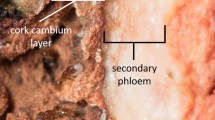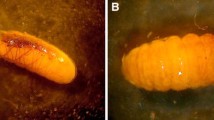Abstract
There are numerous reports of invertebrates that are visual mimics of ants, but no formal reports of mimicry of an ant, by an ant. Two endemic Australian ants, Myrmecia fulvipes and Camponotus bendigensis are remarkably similar in colour and size; both are generally black but have red legs and golden gasters. The density and hue of the pubescence of each ant's gaster are relatively uncommon in ants, but are very rare when combined with the black forebody and red legs. The ants are similarly sized but are smaller than other species closely related to M. fulvipes. The range of C. bendigensis lies entirely within that of M. fulvipes, and both species excavate ground nests in open woodland. Finally, workers of both species are crepuscular and forage solitarily. These data suggest that the relatively benign formicine C. bendigensis is a Batesian mimic of the formidable myrmeciine M. fulvipes.
Similar content being viewed by others
Author information
Authors and Affiliations
Additional information
Received: 9 August 1999 / Accepted in revised form: 22 December 1999
Rights and permissions
About this article
Cite this article
Merrill, D., Elgar, M. Red legs and golden gasters: Batesian mimicry in australian ants. Naturwissenschaften 87, 212–215 (2000). https://doi.org/10.1007/s001140050705
Issue Date:
DOI: https://doi.org/10.1007/s001140050705




